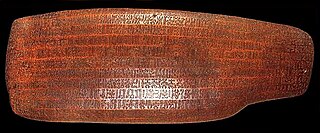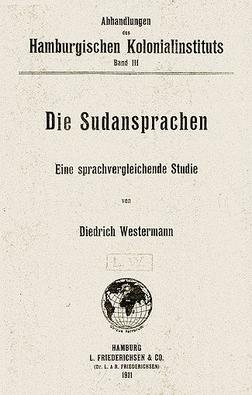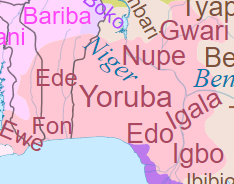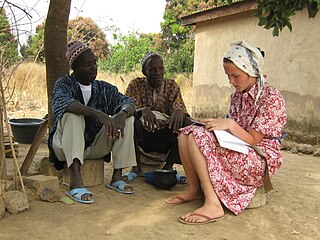Related Research Articles

Niger–Congo is a hypothetical language family spoken over the majority of sub-Saharan Africa. It unites the Mande languages,the Atlantic-Congo languages,and possibly several smaller groups of languages that are difficult to classify. If valid,Niger-Congo would be the world's largest in terms of member languages,the third-largest in terms of speakers,and Africa's largest in terms of geographical area. It is generally considered to be the world's largest language family in terms of the number of distinct languages,just ahead of Austronesian,although this is complicated by the ambiguity about what constitutes a distinct language;the number of named Niger–Congo languages listed by Ethnologue is 1,540.

The Senufo or Senufic languages has around 15 languages spoken by the Senufo in the north of Ivory Coast,the south of Mali and the southwest of Burkina Faso. An isolated language,Nafaanra,is also spoken in the west of Ghana. The Senufo languages constitute their own branch of the Atlantic–Congo sub-family of the Niger–Congo languages. Garber (1987) estimates the total number of Senufos at some 1.5 million;the Ethnologue,based on various population estimates,counts 2.7 million. The Senufo languages are bounded to the west by Mande languages,to the south by Kwa languages,and to the north and east by Central Gur languages.

The West Atlantic languages of West Africa are a major subgroup of the Niger–Congo languages.

Rongorongo is a system of glyphs discovered in the 19th century on Rapa Nui that appears to be writing or proto-writing. Numerous attempts at decipherment have been made,with none being successful. Although some calendrical and what might prove to be genealogical information has been identified,none of these glyphs can actually be read. If rongorongo does prove to be writing and proves to be an independent invention,it would be one of very few independent inventions of writing in human history.

The Songhay,Songhai or Ayneha languages are a group of closely related languages/dialects centred on the middle stretches of the Niger River in the West African countries of Mali,Niger,Benin,Burkina Faso and Nigeria. In particular,they are spoken in the cities of Timbuktu,Djenné,Niamey and Gao. They have been widely used as a lingua franca in that region ever since the era of the Songhai Empire. In Mali,the government has officially adopted the dialect of Gao as the dialect to be used as a medium of primary education.

The Mande languages are a group of languages spoken in several countries in West Africa by the Mandépeoples. These include;Maninka,Mandinka,Soninke,Bambara,Kpelle,Jula,Bozo,Mende,Susu,and Vai. There are around 60 to 75 languages spoken by 30 to 40 million people,chiefly in;Burkina Faso,Mali,Senegal,the Gambia,Guinea,Guinea-Bissau,Sierra Leone,Liberia,Ivory Coast,Mauritania,Ghana and also in northwestern Nigeria and northern Benin.
The Bua languages are a subgroup of the Mbum–Day subgroup of the Savanna languages spoken by fewer than 30,000 people in southern Chad in an area stretching roughly between the Chari River and the Guéra Massif. They were labeled "G13" in Joseph Greenberg's Adamawa language-family proposal. They are ultimately part of the Niger–Congo family,and have exerted a significant influence on Laal.
The Adamawa languages are a putative family of 80–90 languages scattered across the Adamawa Plateau in Central Africa,in northern Cameroon,north-western Central African Republic,southern Chad,and eastern Nigeria,spoken altogether by only one and a half million people. Joseph Greenberg classified them as one branch of the Adamawa–Ubangi family of Niger–Congo languages. They are among the least studied languages in Africa,and include many endangered languages;by far the largest is Mumuye,with 400,000 speakers. A couple of unclassified languages—notably Laal and Jalaa—are found along the fringes of the Adamawa area.

The Atlantic–Congo languages are the largest demonstrated family of languages in Africa. They have characteristic noun class systems and form the core of the Niger–Congo family hypothesis. They comprise all of Niger–Congo apart from Mande,Dogon,Ijoid,Siamou,Kru,the Katla and Rashad languages,and perhaps some or all of the Ubangian languages. Hans Günther Mukarovsky's "Western Nigritic" corresponded roughly to modern Atlantic–Congo.

In early 20th century classification of African languages,Sudanic was a generic term for languages spoken in the Sahel belt,from Ethiopia in the east to Senegal in the west.

Rongorongo is a system of glyphs discovered in the 19th century on Easter Island that appears to be writing or proto-writing. Text E of the rongorongo corpus,also known as Keiti,is one of two dozen known rongorongo texts,though it survives only in photographs and rubbings.

There have been numerous attempts to decipher the rongorongo script of Easter Island since its discovery in the late nineteenth century. As with most undeciphered scripts,many of the proposals have been fanciful. Apart from a portion of one tablet which has been shown to deal with a lunar calendar,none of the texts are understood,and even the calendar cannot actually be read. The evidence is weak that rongorongo directly represents the Rapa Nui language –that is,that it is a true writing system –and oral accounts report that experts in one category of tablet were unable to read other tablets,suggesting either that rongorongo is not a unified system,or that it is proto-writing that requires the reader to already know the text. Assuming that rongorongo is writing,there are three serious obstacles to decipherment:the small number of remaining texts,comprising only 15,000 legible glyphs;the lack of context in which to interpret the texts,such as illustrations or parallel texts which can be read;and the fact that the modern Rapa Nui language is heavily mixed with Tahitian and is unlikely to closely reflect the language of the tablets—especially if they record a specialized register such as incantations—while the few remaining examples of the old language are heavily restricted in genre and may not correspond well to the tablets either.

The Volta–Niger family of languages,also known as West Benue–Congo or East Kwa,is one of the branches of the Niger–Congo language family,with perhaps 70 million speakers. Among these are the most important languages of southern Nigeria,Benin,Togo,and southeast Ghana:Yoruba,Igbo,Bini,and Gbe.
The Senegambian languages,traditionally known as the Northern West Atlantic,or in more recent literature sometimes confusingly as the Atlantic languages,are a branch of Atlantic–Congo languages centered on Senegal,with most languages spoken there and in neighboring southern Mauritania,Gambia,Guinea-Bissau,and Guinea. The transhumant Fula,however,have spread with their languages from Senegal across the western and central Sahel. The most populous unitary language is Wolof,the national language of Senegal,with four million native speakers and millions more second-language users. There are perhaps 13 million speakers of the various varieties of Fula,and over a million speakers of Serer. The most prominent feature of the Senegambian languages is that they are devoid of tone,unlike the vast majority of Atlantic-Congo languages.
Bijago or Bidyogo is the language of the Bissagos Archipelago of Guinea-Bissau. There are some difficulties of grammar and intelligibility between dialects,with the Kamona dialect being unintelligible to the others.

Irina Konstantinovna Feodorova was a Soviet historian. Her field of expertise was the ethnography,culture,folklore and language of the people of East Polynesia. Feodorova was doctor of historical sciences and a leading scientist of the Department of Australia,Oceania and Indonesia at the Museum of Anthropology and Ethnography at the Kunstkamera,St. Petersberg,the first Russian museum that was named after Peter the Great. In 1981,Feodorova was given the honour of being named N. N. Miklouho-Maclay Laureate of the Presidium of the Russian Academy of Science.
The Torres–Banks languages form a linkage of Southern Oceanic languages spoken in the Torres Islands and Banks Islands of northern Vanuatu.
Proto-Niger–Congo is the hypothetical reconstructed proto-language of the proposed Niger–Congo language family.

Alexandra Vydrina was a Russian linguist and researcher at the French National Centre for Scientific Research (Paris) specializing in research on African languages of Guinea.
Guillaume Segerer is a French linguist who specializes in Niger-Congo languages,especially the Atlantic languages.
References
- ↑ Pozdniakov, Konstantin. "Etudes atlantiques comparatives : questions de méthodologie." Mémoires de la Société linguistique de Paris, XV, 2007, p. 93-119.
- ↑ Pozdniakov, Konstantin. "Problèmes de l’étude comparative historique des langues atlantiques". Sprache und Geschichte in Afrika, 2007.
- ↑ Pozdniakov, Konstantin & Segerer, Guillame. Reconstruction des pronoms atlantiques et typologie des systèmes pronominaux // Systèmes de marques personnelles en Afrique. Collection «Afrique et Langage », 8, 2004, p. 151-162.
- ↑ Pozdniakov, Konstantin & Segerer, Guillame. Tradition et rupture dans les grammaires comparées de différentes familles de langues », 2007, p. 93-119.
- ↑ Pozdniakov, Konstantin & Segerer, Guillaume (2017). "A Genealogical classification of Atlantic languages." [ permanent dead link ] (Draft) To appear in: Lüpke, Friederike (ed.) The Oxford guide to the Atlantic languages of West Africa: Oxford:Oxford University Press.